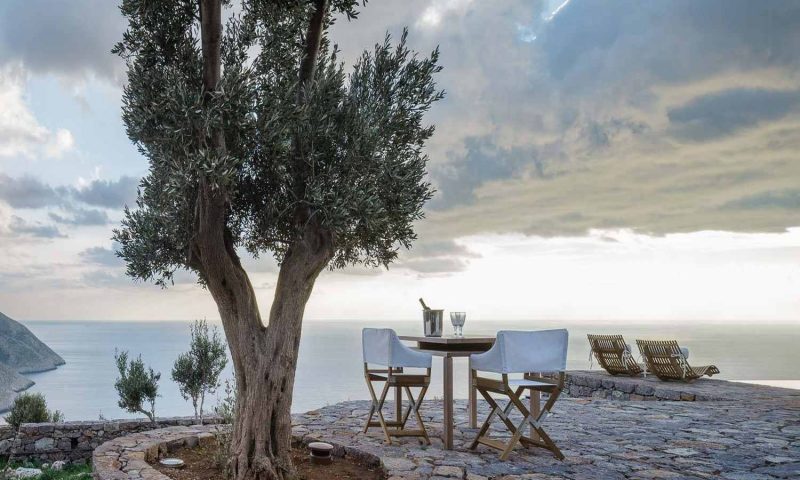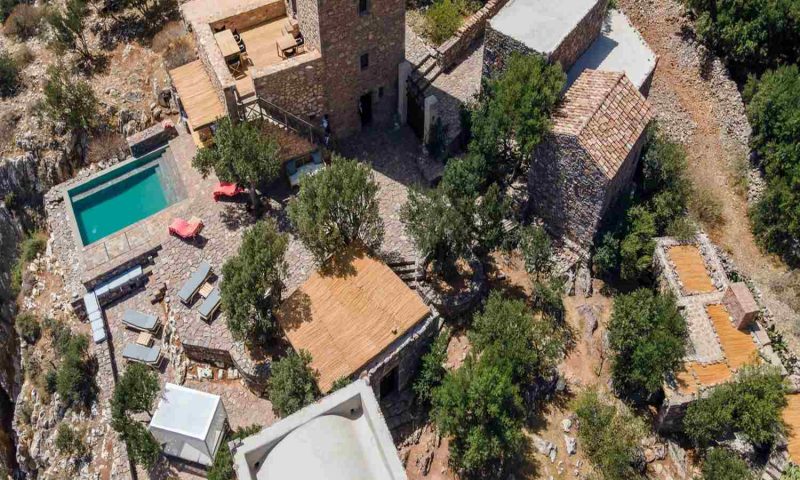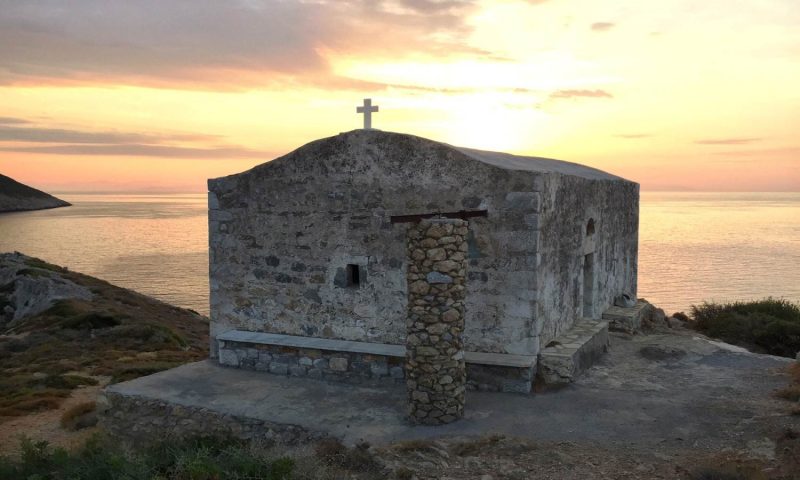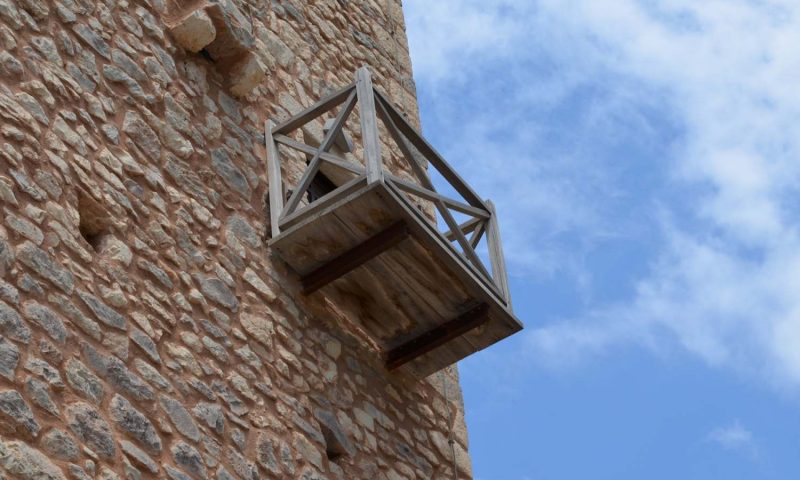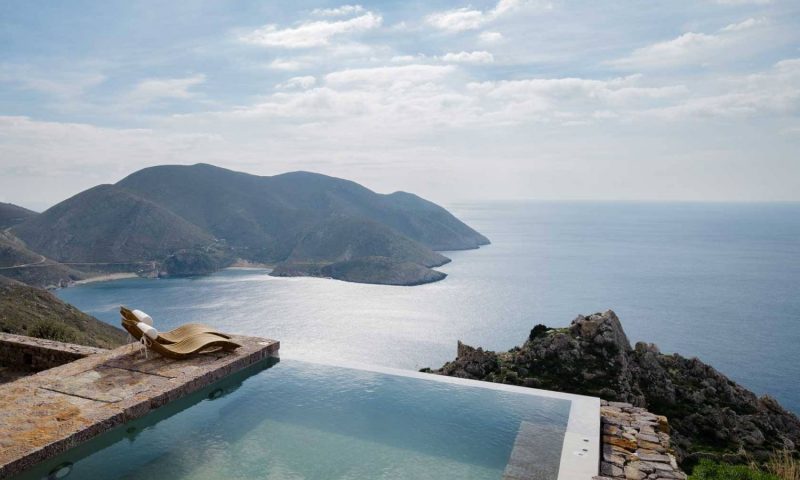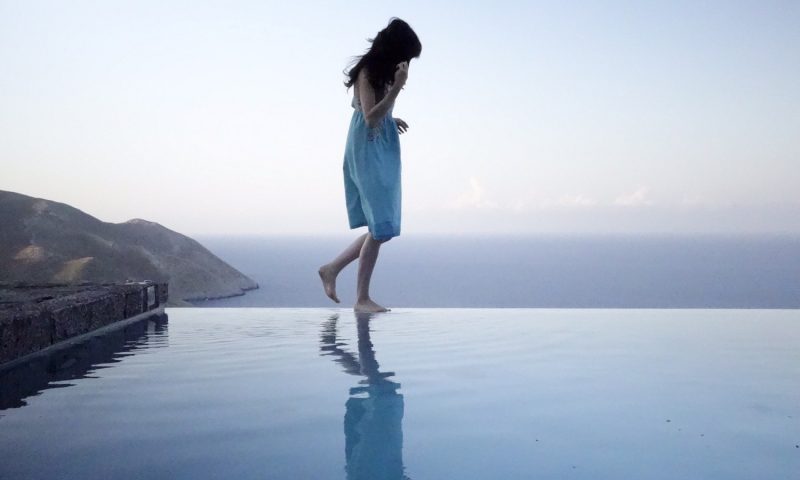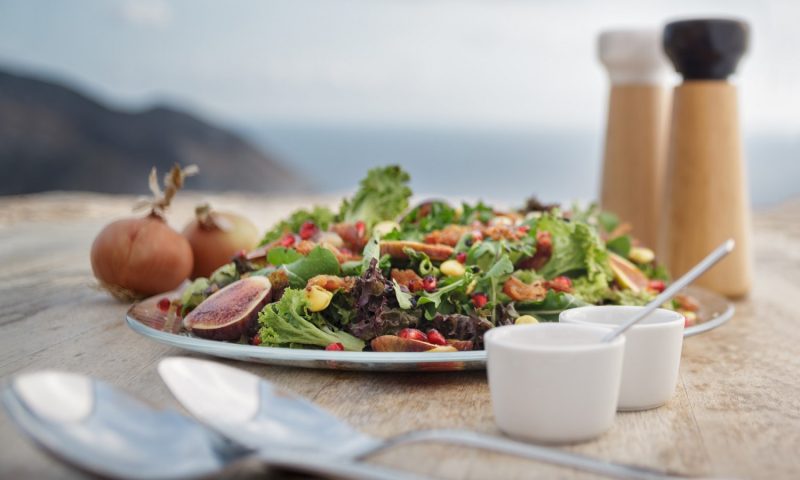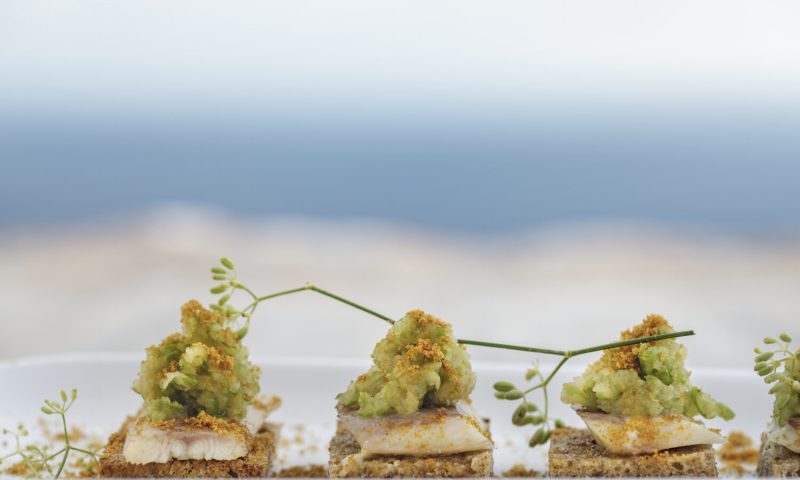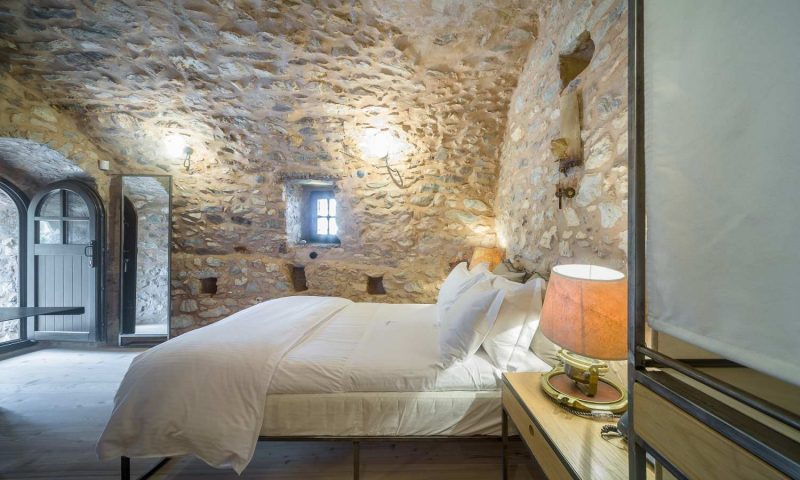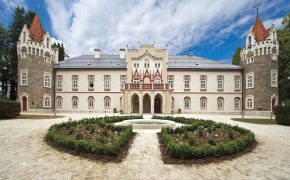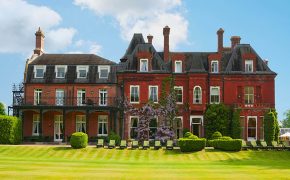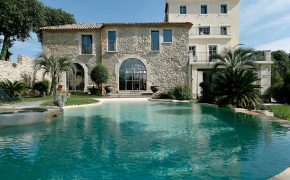Surrounded by a beautiful landscape and breathtaking views, Tainaron Blue Retreat welcomes its guests offering excellent cuisine combined with impeccable service and warm hospitality. Unwind and rejuvenate in the midst of nature with a glass of wine, enjoying the unobstructed view in one of the most exciting locations in Greece.
Tainaron Blue Retreat is housed in an early 19th-century stone tower that boasts stunning panoramic views of the southernmost slope of Taygetos mountain and the sea. Perfectly situated in an idyllic location, it is an ideal place to watch the magical sunset over the sea or witness the serene beauty of a new day dawning.
This traditional tower is a perfect example of the defensive architecture of the area. With their simple and austere beauty, the imposing towers of Mani resist the passage of time and offer a fascinating journey into the past.
In times of conflict, they served to control and repel hostile attacks, while in times of peace and prosperity they were used as residential places and courtyards. During the conversion of this three-story tower into a guest house we encountered considerable difficulties.
We had to adapt to the specific characteristics of the architecture of Mani and at the same time ensure that the interior spaces keep pace with modern aesthetics. The structure inside and outside of the tower had to remain unchanged, while all modern facilities and infrastructure had to be settled imperceptibly.
As the formation of the exterior spaces had to ensure minimum interference, the addition of a water surface area was adapted to the specific environment and respected the topography of the landscape, resulting in an even and unified set of buildings and space with intensity and character.
The Tainaron Blue Retreat offers you the quaint and unique experience of staying in a tower that comes from the past, with its traditional narrow stairs and wooden ladders.
Its three vintage rooms, with unobstructed sea and mountain views, are equipped with beautiful Coco-mat linen and ecological toiletries and are embellished with works of art created by sculptor Nikos Karalis.
MASTER SUITE WITH SEA VIEW
Featuring a double bed and a second double in the loft, this room on the top level of the tower is ideal for families. It offers an all around breathtaking view, while the stone and wood combination creates a unique warm and cozy atmosphere.
The Master Suite with Sea View has its own wooden balcony that offers unparalleled views and peaceful serenity. It covers an area of 25m2and provides you with satellite Smart TV, air conditioning, mini bar and a safe.
A boat ladder gets you up to the loft, where a separate air conditioning unit has been installed. Featuring a small bath tub, the private bathroom comes with a professional hair dryer, bathrobes, slippers and free ecological toiletries. During your stay, don’t miss the chance to drift away in the outdoor infinity hydrotherapy pool.
JUNIOR SUITE WITH MOUNTAIN VIEW
For those who wish to enjoy spectacular mountain views, the Junior Suite offers a comfortable double bed and a separate single one, built into the wall. Under its beautiful vaulted ceiling, this room provides you with a satellite Smart TV, air conditioning, a mini bar and a safe.
The private bathroom features a glass shower cabin and also a professional hair dryer, bathrobes, slippers and free ecological toiletries. There is a connecting door between this room and the Executive Double Room with Sea View and upon request the two rooms can be linked for a large family.
The Junior Suite provides easy access to the patio. During your stay, don’t miss the chance to drift away in the outdoor infinity hydrotherapy pool.
EXECUTIVE DOUBLE ROOM WITH SEA VIEW
Relax and take in the lovely view of the sea or enjoy the outdoor infinity hydrotherapy pool, right at your feet! This air conditioned room of 18m2, with a beautiful vaulted ceiling provides easy access to the patio and it combines comfort and functionality.
The Executive Double Room features a satellite Smart TV, a mini bar, a safe and a private bathroom with wet-bath shower, professional hair dryer, bathrobes, slippers and free ecological toiletries. Upon request, we can open the connecting door between this room and the Junior Suite, for a large family.
DINING
Our intimate restaurant offers guests an authentic Maniot culinary experience during their stay. The rich culture of our region serves as an inspiration for our culinary consultant Chef George Samoilis to create a fine menu based on traditional recipes. He transforms the inspiration into a magical gastronomical journey full of flavour, aromas and Greece.
While at Tainaron Blue Retreat, let the authentic flavors that have made the cuisine of Mani unique charm your palate: Spoil yourself with a mouthwatering salad that contains mixed greens and traditional smoked pork (siglino)…
Try the fresh catch of the day, the delectable Mediterranean-style beef “tataki” or the local orzo pasta with sweet wine, sun-dried tomatoes, capers and smoked monastery cheese. The menu features a variety of Greek wines that best complement the local cuisine.
Breakfast and meals are served on the patio by the pool or on the wooden deck of the veranda with its magnificent sea view. You can also ask for your favorite cocktail or mixed drink and experience some creative mixology.
MANI
Mani, Greece: Tainaron Blue is located in a place of mystery, myths and natural beauty. Tainaron Blue is located just a few kilometers from Cape Tainaron. This is the southernmost geographical point of mainland Greece and also the southernmost point of mainland Europe.
For thousands of years, Cape Tainaron (formerly known as Cape Matapan) has been a unique region full of mystery, myths and natural beauty. According to Pausanias, this is where a Temple to Poseidon had been built. Poseidon was worshipped especially by Lakones, and the temple became the center of the “Brotherhood of Freelakones”.
There is also a cave at the tip of the Cape, that legends claim it was the home of Hades, the god of the Underworld. According to the ancient Greek mythology, Cerberus, a three-headed dog guarded the gate, to prevent the dead from escaping and the living from entering.
THE TEMPLE OF POSEIDON
Carved by nature and time and full of antiquities, the Akrotainaron area – the tip of the cape – awaits guests to reveal its ancient paths to them. It’s here that the god of the sea Poseidon was worshipped and given various names; o epi Tainaro, Tainarios, Asphaleios, Gaiiochos and Pontius.
This is how you will find Poseidon in ancient historical texts. Besides, Poseidon was not only protecting the sailors. It was he who caused storms and earthquakes, and he could also calm down the sea and stabilize the earth. The ancient Greeks chose this unique location to build the temple and honor the god Poseidon.
The sacred sanctuary of Poseidon was built in a cave. The path to the interior, carved into the rock, was preparing him who wanted to get into the psychopompeion. It also functioned as a necromancy and oneiromancy temple.
The cave located inside the temple was connecting the Underworld to the Upperworld. This was believed to be the gates of Hades, guarded by the monstrous three-headed dog Cerberus. The temple was also established as a place for persecuted who fled there for protection.
According to the myth, a dolphin saved Poseidon from drowning and transferred him safely to the temple. So, at the entrance stood a bronze statue of Arion Citharoedus (or Orion) seated on a dolphin and a small fountain, that anyone who looked in it could see the sea and ships.
At this holy location you will also find the chapel of Asomatos. It is believed that the ancient temple stood right where the Christian church is today. However, contemporary researchers find this unlikely. The temple of Poseidon probably stood somewhere near this location, and some of its materials were used in constructing the chapel of Asomatos.
Although the building materials of the Temple of Poseidon have disappeared, the carvings in the rock revive the way that the temple was founded and takes visitors on a journey to its ancient secrets paths.
CAPE TAINARON: THE GATE TO HADES
Cape Tainaron separates the eastern Laconian Gulf from the Messenian Gulf in the west. It is believed that it took its name from the mythical son of Zeus, Taenarus, who built a town named Taenarum after himself. At this region, a cave network was believed to be an entrance to Hades; the gate to the Underworld.
This gate was guarded by Cerberus, a vicious beast that prevented the dead from escaping and the living from entering the world of the dead. According to Apollodorus, Cerberus had three heads of wild dogs, a dragon or serpent for a tail, and the heads of all sorts of snakes all over his back.
In his twelfth labour, assigned to him by King Eurystheus, Heracles (Hercules) was ordered to descend to the Underworld, kidnap and bring Cerberus to the surface. He asked Hades’ permission to capture the beast. The lord of the Underworld replied that Heracles could take Cerberus with him as long as he used no weapons and didn’t hurt him.
Heracles used his bare hands and was able to overpower the beast. He dragged it out of the Underworld and brought it to Eurystheus. Orpheus also traveled down to Hades to bring back to life his beloved wife, Eurydice, through this cave. Hades himself told Orpheus that he could take Eurydice with him but under one condition; he should not look at her before coming out of the cave, because he would lose her.
Unfortunately, only a few feet away from the exit, Orpheus lost his faith as he could not hear his wife’s steps, so he turned to see… Eurydice was immediately sent back to the Underworld forever.
THE VLYCHADA CAVE IN DIROS, MANI
On the west coast of the Laconic Peninsula, in the bay of Diros, lies one of the most beautiful caves in the world. The Vlychada (or Glyfada) is a miracle of nature, with its white stalactites and stalagmites forming imposing columns, and its galleries and chambers that take visitors’ breath away.
The Vlychada cave started forming hundreds of thousands of years ago. The fossil bones found in the cave included hippos, panthers, hyenas, lions and deers. Near its natural entrance, which is close to the sea surface and has a diameter of half a meter, pottery fragments have been found, indicating human presence.
The existence of the cave was known to the locals since 1900, but systematic exploration began in 1949 by the founders of the Greek Speleological Society, Yiannis and Anna Petrochilou. The first underwater exploration was conducted in 1970 and continues today, both above and below water with cave diving. Today, the known length of the cave more than 14 km.
The cave first opened to visitors in 1967, when the Greek National Tourism Organization completed all necessary work, which had begun six years earlier. The tourist route has a total length of 1,500 meters, of which the first 1,200 are on a lake and the tour lasts about 25 minutes. The water temperature is around 14°C, while the air temperature ranges from 16 to 19°C.
You can reach Vlychada cave through Sparta, passing from Gytheio, and through Kalamata, passing from Itilo. The distance from Athens is about 300 km. The beauty of Mani and the magic of this cave will reward you!
Always have your hands inside the boat and follow the instructions of your boatman. Also, watch your head. Keep in mind that cutting or touching cave formations is prohibited and violators are prosecuted.
THE CHARMING TOWN OF VATHIA
Just before the “end of the road” towards the southernmost tip of mainland Greece and Europe and just before the sensations surrender to the mysterious endless blue, you will find the traditional settlement of Vathia. Perched on top of a slope at an altitude of 190 m, made of stone, undergrowth and lots of light it stands imperious and imposing.
If we wanted to place Vathia in history it would be somewhere in the 16th century. Its inhabitants lived from grain cultivation, animal husbandry, hunting and piracy and lived in towers.
The towers are an excellent example of Mani architecture and add their own distinctive touch to the landscape, leading the visitor on a charming, mysterious and unexpected journey. The stone towers of Vathia were built in the 18th and 19th centuries, they are two or three levels and have very small windows that were used as embrasures.
Stop by and enjoy the magic. Walk the streets, enjoy the serenity, the sea and the mountains, find a high point and gaze into the horizon as the sun disappears into the sea… Your senses will create images that will remain indelibly etched in your memory!
THE TOWERS OF MANI
The prime feature of the strong, patriarchal Maniot groups was the tower that was used to control the area, defend their lives and property and support the expansive aspirations of the powerful landowners.
The towers of Mani –about eight hundred in total– never fail to impress, being amazing examples of the special architecture of Mani. Made of stone, they may reach 20 m in height and may be comprised of 3-5 floors.
The use of local stone made the towers indistinguishable when seen from distance, protecting them mainly from pirates. The construction of towers intensified between 1770-1830, while in the South it continued until 1880.
To defend or expand their land property, Maniot landowners were erecting the “xemonia”; buildings that were built on crossroads and other key locations in order to control the area around them and repel hostile attacks, in times of conflict. In times of peace and prosperity they were used as residential places and courtyards.
The Tainaron Blue Retreat is a representative sample of traditional xemonia. The tower is facing a similar construction, which had also been a strong fortified complex. Both together, they controlled the road to the area around Tainaron.
The war tower was built on solid ground and rocks (known as “rizomies”) and it’s constructed on an almost square base whose sides are each about 5 meters. Like all defensive towers, a residence is located adjacent to it. With their simple and austere beauty, the imposing towers of Mani resist the passage of time and offer a fascinating journey into the past!
HIKING IN MANI: THE TRAIL FROM KENOURGIA CHORA TO ACHILLION
A beautiful hiking trail, just a breath away from Tainaron Blue, is the one that starts at the village of Kenourgia Chora and ends at Achillion.
Kenourgia Chora is located at an altitude of 420m. Here you can visit the church of Panagia (Virgin Mary), built in 1865 and wall painted in 1876. You can also see the now ruined chapel of St. Anargyroi, with remains of frescoes.
The trail starts heading east and then southeast to end at the village of Achillion. As you approach the Akrotainaron area (the tip of the cape), the view is fantastic! In the east lies the gulf of Porto Kagio and in the west the gulf of Marmari, while in the background Skourka, the highest peak of Akrotainaron, is visible.
In some areas passing may be difficult because of the dense vegetation. But this should not prevent you from enjoying it… it’s really worth it!
THE TRADITIONAL DIET OF MANI
“Tainaron Blue” salad: mixed lettuces, rocket and wild seasonal greens with Mani’s smoked siglino, dried fig slices, pomegranate, loupina and fig-syrup vinaigrette
Mani… The southernmost part of mainland Greece that ends at Cape Tainaron. A multifaceted and always charming place. The mountains and the sea, the olive trees and the stone, shady or sunlit. 98 villages full of towers, each one telling its own story! A place full of history that smells of sage, citrus and olive from end to end.
The elements that comprise the traditional diet of Mani are simple, yet so valuable! The cuisine has always been based on a few local products. Fish and meat (mainly pork), poultry and also game, vegetables, pasta, frumenty and local cheese.
Simple recipes, flavored with fragrant herbs, honey and vegetables, accompanied by the precious olive oil, were later included by scientists in a balanced diet essential for good health!
Try the Mani’s siglino (salted pork), celery with pork, braised rooster with spaghetti, “sfougato” (spaghetti with mizithra cheese and scrambled eggs), pancakes, “diples” (folded dough sheets), “hilopites” (traditional pasta), frumenty and of course freshly baked bread, still warm. For dessert, go for the traditional pancakes, “diples” and milk pie.
And when the journey comes to an end, the local shops will provide you with unique flavors: olives, olive oil, honey, cheese, wonderful sweets, jams, herbs, oregano, tea, sage and regional wines, for unique culinary memories.
